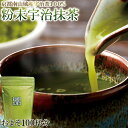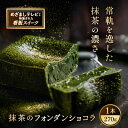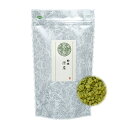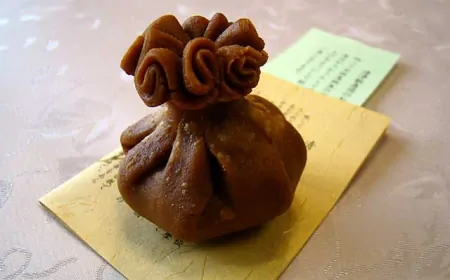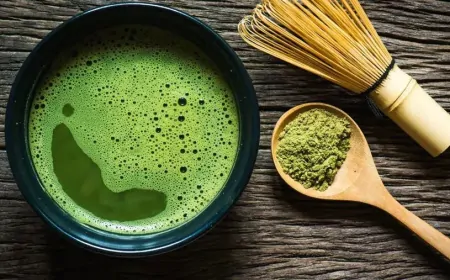Interesting facts about Japanese rice
Did you know that in Japan, rice used to be used as a form of currency? Rice and rice-based products are the staple food in Japanese cuisine, and rice holds a significant position in Japanese culture.

White rice is an essential component of traditional meals, but rice grains are not only cooked as plain rice. They are also processed into various other products such as sake, vinegar, or rice flour.
1. Popular Types of Rice
White Rice (Hakumai 白米)
This type of rice has short, slightly round grains that stick together when cooked. Most rice in Japan is polished to remove the outer hard husk (also known as bran). White rice is commonly found in most meals and serves as the base for many different dishes.
Sticky Rice (Mochigome もち米)
Sticky rice, also known as glutinous rice or mochi rice, is the second most popular type of rice in Japan. It has whiter grains compared to other varieties and smaller grain size. This nutritious rice becomes even stickier when cooked compared to regular white rice and is often pounded into sticky rice cakes, used in sweets, or included in dishes like sekihan (sticky rice with red beans).
Brown Rice (Genmai 玄米)
Brown rice, which is less popular in the past, has gained popularity in recent years as a healthier alternative to white rice. It is considered a nutritious food as it retains more nutrients, vitamins, and essential minerals than white rice. Brown rice is not extensively milled or polished, so it retains the outer bran layer, which contains more nutrients.
Mixed Grain Rice
Various grains and seeds can be added to white rice to enhance flavor and nutritional value. Sometimes, Japanese people simply mix barley with rice, resulting in "Mugi gohan." However, there are more complex combinations that can include over 10 different grains and seeds.
Mixed grain rice is often named based on the number of different grains added. It is not commonly found in regular Japanese restaurants but is served in specialized establishments that focus on healthy foods.
2. Common Rice-based Products
Rice Wine (Nihonshu or Sake 日本酒・酒)
Rice wine, commonly known as nihonshu or sake (sometimes referred to as nihonshu to distinguish it from the general term "sake" for alcoholic beverages), is an alcoholic beverage made from fermented rice through a meticulous and precise process. Sake comes in various types, differing in the production process, ingredients, and serving temperature (hot or cold).
According to tradition, sake should not be consumed together with dishes that contain rice since sake itself is made from rice. Mirin, which is also produced through a similar rice fermentation process as sake, is a sweet rice wine widely used in cooking, known for its high sugar content, and often referred to as "mirin sauce."
Rice Bran (Nuka 糠)
Rice bran, or nuka, is the outer hard husk of rice grains removed during the polishing process to make the rice appear white and shiny. However, rice bran is highly nutritious and used in various ways in Japanese cuisine. The most common use is in making a type of pickled vegetables called nukazuke (ぬか漬け).
Rice Vinegar
Vinegar can also be produced from rice and is commonly used by chefs and home cooks in sauces, pickles, and for seasoning rice in sushi. Most Japanese rice vinegar has a light color, mild flavor, and moderate acidity, sometimes with a hint of sweetness. Black vinegar is also used and considered a healthful beverage.
Rice Flour
Rice flour is made from white rice (hakumai) or glutinous rice (mochigome) and is used to make various Japanese rice cakes and snacks (senbei). It is also used as an ingredient to add texture to dishes, thicken certain sauces, or substitute for wheat flour in bread-making. Notably, rice flour is completely gluten-free, which can be beneficial for some diners with allergies.
3. Delicious Rice Dishes
Mochi Rice Cakes
Mochi rice cakes, or omochi, are traditionally made by steaming glutinous rice and pounding it with a wooden mallet until it becomes a sticky mass. This pounding process requires two people, one to handle the large wooden mallet, and the other to continuously calculate timing and quickly flip the rice dough. Mochi cakes come in various fillings and preparation methods depending on regional variations.
For example, Iwai mochi is filled with red bean paste and often enjoyed during longevity celebrations and school entrance ceremonies. Another variation is Kashiwa mochi, mochi steamed with oak leaves, which appeared in the manga series "Asari-chan." Originally, mochi was only eaten on New Year's Day according to Japanese tradition, but over time, it has become a popular year-round treat. Rice cakes can also be prepared in various ways, such as fresh, grilled, fried, or served in New Year's Zoni soup or Chikara udon noodles.
Tamago Kake Gohan (Raw Egg Over Rice)
This simple breakfast dish is commonly known as Tamago Gohan and consists of a raw egg mixed with a bowl of cooked rice, sometimes with a dash of soy sauce. The rice can be served hot or cold, depending on personal preference, and the egg can be cracked directly into the rice bowl or served in a separate dish. Some people create a small "well" with the rice and then crack the egg into it.
Chazuke (Tea-Infused Rice)
Chazuke, or ochazuke, is a simple yet refined dish commonly found in Japanese cuisine. Chazuke consists of tea, dashi broth made from seaweed, various vegetables, and thinly shredded bonito or simply plain hot water poured over rice. The tea used is typically pure green tea to maintain the authentic flavor of the dish.
This rice soaked in tea is often garnished with accompanying ingredients such as umeboshi (dried salted plums), grilled salmon, dried seaweed, finely chopped scallions, or pickles. Despite its simple preparation, the presentation of the dish is elegant and not overly complicated. Chazuke is commonly served at Japanese izakayas, and people often enjoy it after drinking.
Kayu: A Gentle and Nourishing Japanese Rice Porridge
Kayu, also known as Japanese rice porridge, is a delicately flavored and easily digestible dish made by slowly simmering cooked rice with plenty of water. It has a thicker consistency compared to other types of porridge and is a comforting option for those feeling under the weather or unsure how to repurpose leftover rice.
This dish also has variations such as Chakayu, which is rice porridge infused with tea similar to chazuke. You can also prepare kayu with sweet potatoes and eggs or opt for Nanakusagayu, which includes seven spring herbs for a prosperous new year. Okayu is often garnished with umeboshi salted plums and is commonly served to individuals who are unwell due to its easy digestibility.
Nukazuke: Fermented Rice Bran Pickles
When craving a lighter alternative to greasy dishes, what type of food can come to the rescue? Nukazuke, or fermented rice bran pickles, is a popular accompaniment in Japan. It involves placing various vegetables in a mixture of rice bran, salt, and other ingredients.
The vegetables are thoroughly coated in the mixture and left to ferment for several months. The result is crispy and slightly salty pickles. After rinsing off the pickling mixture, the pickles are thinly sliced and served on the table. Nukazuke is rich in lactobacillus, which aids digestion effectively.
Omuraisu: Omelet Rice, a Beloved Delight
Omuraisu, short for omelet rice, is a beloved dish among children. It features fried rice enveloped in a thin, golden omelet, resembling a plump and cozy pillow. Omuraisu is often topped with tomato sauce for added flavor. There are various versions of this dish, especially regarding the fried rice filling. Typically, the fried rice is stir-fried with salt, pepper, assorted meats, vegetables, and seasoned with sauce. However, there are variations such as substituting rice with yakisoba noodles, creating a delightful dish known as omusoba.
4. Etiquette Tips for Handling Rice in Japan
- Hold your rice bowl while eating and avoid placing it on the table, as it is considered impolite.
- It is customary to consume every grain of rice in your bowl, as a gesture of gratitude for the food and the cook.
- Refrain from pouring soy sauce directly onto the rice while eating.
- Avoid sticking your chopsticks upright in the rice bowl, as it resembles a funeral ritual during a meal.
Related Products
